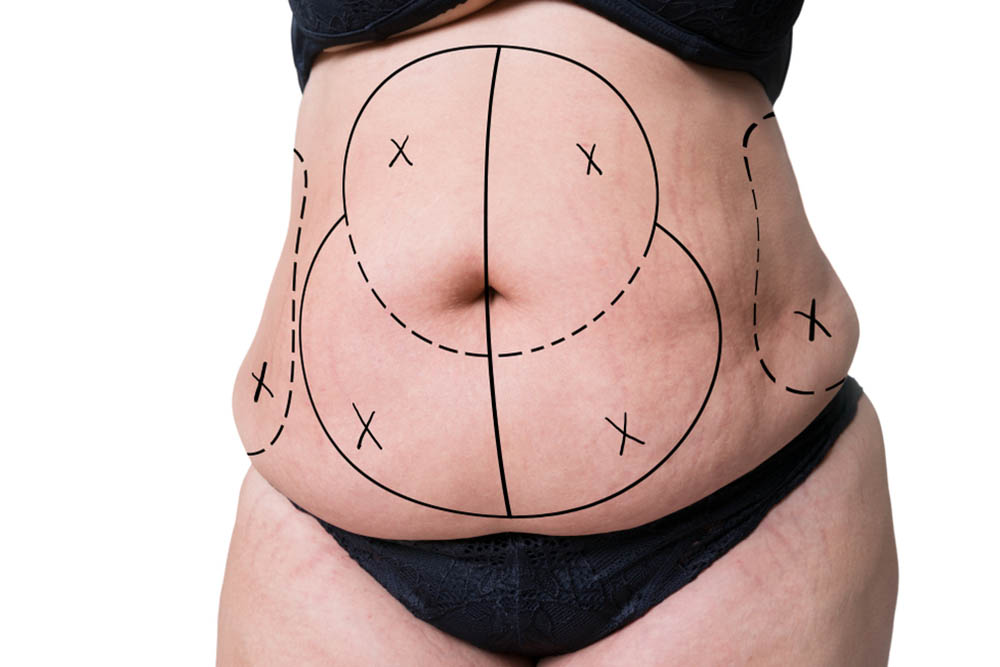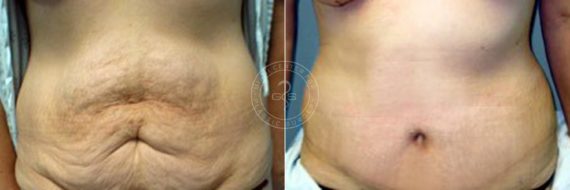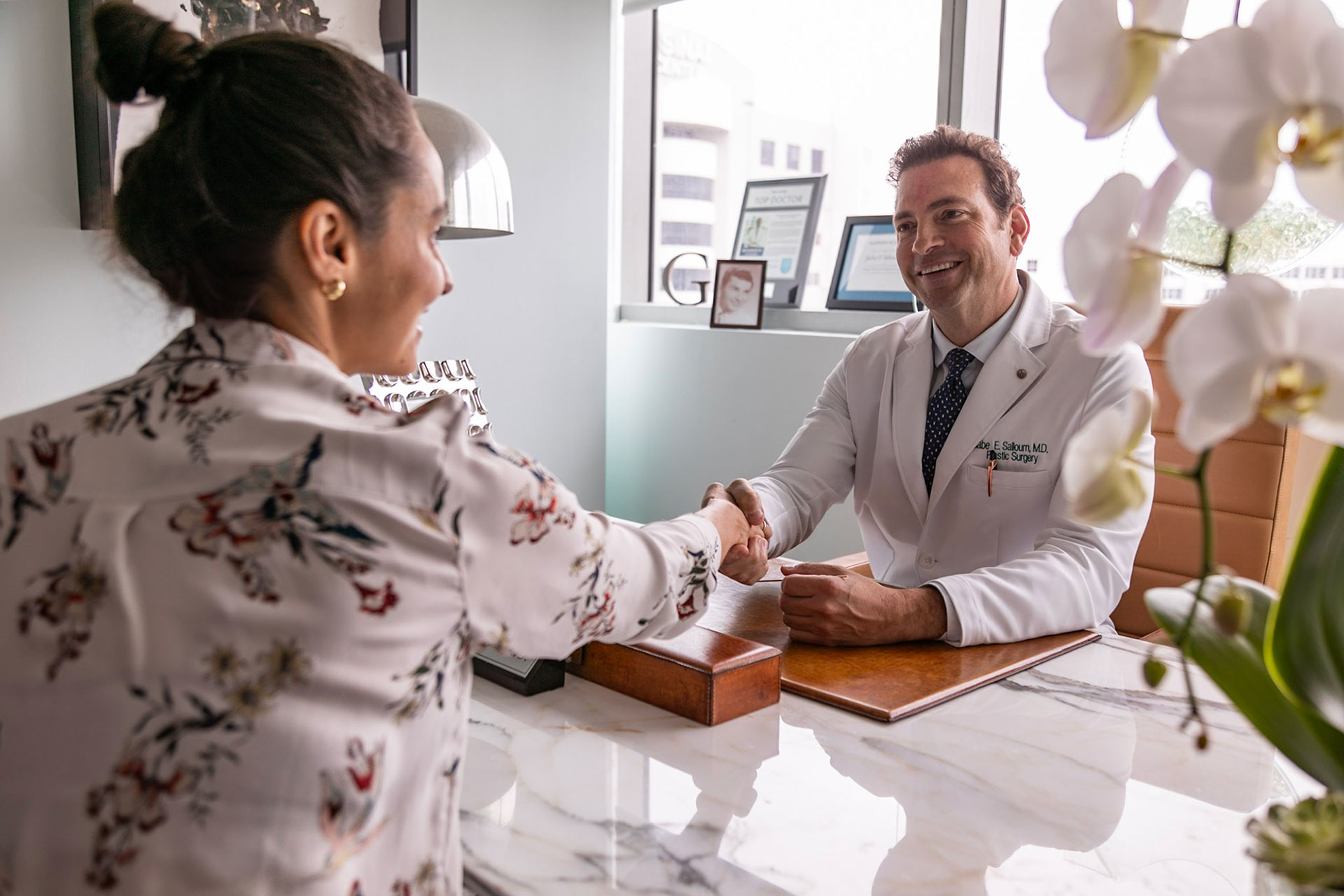
Thinking about a tummy tuck but feeling a little nervous about what might go wrong? You’re not alone. While the surgical procedure is widely performed and generally safe, like any major surgery, it comes with potential risks and complications worth understanding.
Whether you’re planning your surgery or recovering from one, it helps to know what’s normal—and what’s not. From identifying red flags to understanding when a revision might be needed, we’re here to help you navigate the process with more confidence and clarity.
How High is the Tummy Tuck Success Rate?
Tummy tucks are generally a very safe way to get rid of loose skin or excess skin in the abdominal area when performed by a qualified surgeon. According to the American Society of Plastic Surgeons (ASPS), the complication rate for tummy tucks is just 3.1%, making it safer than many other cosmetic surgeries. Risks may increase with combined procedures, but with diligent post-op care and an experienced specialist at your side, most complications can be avoided or successfully managed.
Warning Signs After Tummy Tuck Surgery
Even when performed by skilled hands, tummy tucks require a recovery period during which close attention must be paid to your body’s signals. While some discomfort and swelling are normal, certain symptoms could indicate complications that require medical attention. Knowing what to watch for can help you take prompt action and protect your results.
Excessive Pain and Swelling
While some discomfort is expected in the first days after surgery, pain that intensifies or persists beyond the usual recovery window can signal trouble. Likewise, swelling that worsens or appears uneven may indicate fluid buildup or infection. Don’t ignore these red flags; contact your surgeon promptly to rule out complications and ensure a proper healing process.
Drainage at the Incision
Some light, clear drainage from the incision site can be normal in the early days of healing. However, if the fluid becomes thick, yellow, green, or foul-smelling, it may indicate an infection. Prompt evaluation by your surgeon is essential to prevent the issue from worsening and to safeguard your overall recovery.
Fever-like Symptoms
A low-grade fever is sometimes part of the body’s natural healing response, but a persistent or high fever can signal infection. If your temperature exceeds 100.4°F or is accompanied by chills, fatigue, or redness around the incision, it’s best to consult your surgeon immediately to prevent more serious potential complications.
Delayed Recovery Process
Most tummy tuck patients notice steady improvements within the first few weeks. If you find that your healing is stalled, such as wounds not closing, ongoing fatigue, or little change in swelling, it could be a sign of underlying issues. Delayed recovery warrants a medical checkup to determine whether additional care or intervention is needed.
Numbness or Tingling
Some temporary numbness is common after a tummy tuck due to nerve disruption during surgery. However, if numbness persists for several weeks or is paired with tingling or burning sensations, it may suggest nerve damage. Always report unusual or prolonged sensory changes to your surgeon to rule out complications and guide proper treatment.
Shortness of Breath
Difficulty breathing or a tight feeling in the chest following surgery is not a normal part of recovery and should be treated as an emergency. These symptoms could be signs of a serious health condition like a pulmonary embolism. Seek immediate medical attention if you experience shortness of breath to rule out life-threatening complications.
Signs of a Blood Clot
Blood clots, particularly deep vein thrombosis (DVT), are rare but serious risks after surgery. Symptoms may include swelling in one leg, warmth to the touch, redness, or unexplained leg pain. If the clot travels to the lungs, it can become life-threatening. Immediate medical attention is necessary if you suspect a clot is forming.
Fat necrosis
Fat necrosis occurs when fat cells in the surgical area die due to an insufficient blood supply. This can result in firm lumps under the skin, changes in texture, or visible irregularities. While not always dangerous, fat necrosis can affect the appearance and feel of your results. Your surgeon can advise if treatment or monitoring is needed.
Tummy Tuck Before and After Pictures


*All patients are unique and individual results may vary.
Signs of Bad Tummy Tuck Results
While some tummy tuck issues appear during recovery, others become noticeable only after healing has progressed. Aesthetic concerns like poor scarring, uneven contours, or misplaced features can affect both confidence and comfort. Understanding the signs of unsatisfactory results can help you decide if a revision or further evaluation may be necessary.
Excessive Scarring
While some scarring is inevitable after a tummy tuck, poor surgical technique or improper healing can lead to thick, raised, or overly visible scars. These scars may stretch beyond the bikini line or appear discolored and uneven. If your tummy tuck scars are not fading over time, a revision or scar management treatment may be necessary.
Irregular Abdominal Shape
A well-executed tummy tuck should leave the abdomen smooth and naturally contoured. If you notice bulges, indentations, or asymmetry, it may be a sign of uneven fat removal or muscle repair. These irregularities can often be improved with a second surgery, especially when evaluated by a qualified and experienced plastic surgeon.
Misplaced Belly Button
An unnatural-looking or off-center belly button is one of the most obvious signs of a poor outcome. The navel should appear symmetrical and proportionate to your abdomen. If it looks too high, too low, or oddly shaped, a revision may be necessary to restore a natural and aesthetically pleasing result.
How to Avoid a Botched Tummy Tuck Procedure
Avoiding poor results from a tummy tuck starts long before the day of surgery. The choices you make during the planning stage—and the steps you take during recovery—are critical to achieving a safe, successful outcome. By staying informed and proactive, you can dramatically lower your risk of complications or dissatisfaction.
- Choose a Board-Certified Plastic Surgeon: Always confirm your surgeon is certified by the American Board of Plastic Surgery. This ensures they have the specialized training and expertise needed to perform abdominoplasty safely and effectively.
- Look at Before-and-After Photos: Reviewing real patient results can give you a sense of a surgeon’s aesthetic style and consistency. Focus on patients with body types similar to yours for the most useful comparison.
- Have a Thorough Consultation: A detailed consultation should cover your medical history, expectations, and any questions you have. Your surgeon should take time to explain the procedure, risks, and realistic outcomes.
- Follow All Pre- and Post-Operative Care Instructions: Adhering strictly to your surgeon’s guidelines—before and after surgery—is essential. This includes stopping certain medications, arranging help during recovery, and attending all follow-up visits.
- Avoid Smoking and Alcohol: Smoking interferes with healing and raises your risk of complications. Alcohol can thin your blood and increase bleeding. Avoid both before and after your procedure as instructed by your surgeon.
- Give Yourself Time to Heal: Avoid rushing back into strenuous activity. Tummy tuck recovery takes time, and pushing your abdominal muscles too soon can harm your results. Listen to your body and prioritize rest.
- Monitor Your Recovery Closely: Stay alert to warning signs like excessive swelling, pain, or drainage. Report any concerns to your surgeon promptly to catch potential issues early and avoid serious complications.
- Incorporate Lymphatic Massage (if recommended): Lymphatic drainage massage can help reduce swelling, improve circulation, and support healing after surgery. Only do this under your surgeon’s advice and at the right stage of recovery.


SPECIALIST CARE YOU CAN TRUST
Dr. Salloum is supported by a brilliant team of caring staff members.
You can trust the entire staff to help make your visit as comfortable and safe as possible!
How Do I Know if I Need a Tummy Tuck Revision Surgery?
Not all tummy tuck outcomes meet patient expectations, and in some cases, a revision procedure may be necessary. Common signs that might warrant a revision include excessive scarring, irregular contours, or an unnatural-looking belly button. However, deciding on a revision is not just about appearance—it also depends on timing.
It’s typically recommended to wait about a year before considering a tummy tuck revision. This allows your body to fully heal and tissues to settle, making the results of any follow-up surgery more predictable and reducing the risk of further complications. That said, in more severe cases, such as persistent deformities or significant complications, a revision may be considered as early as six months, under the guidance of a qualified plastic surgeon.
Schedule a Consultation with a Body Plastic Surgeon
A successful tummy tuck depends heavily on the skill, experience, and attention to detail of your plastic surgeon. Choosing a highly trained, board-certified doctor ensures you’re in safe hands, reducing risks and increasing the likelihood of a smooth recovery and satisfying results.
At The Miami Center for Plastic Surgery, Dr. Gabe Salloum combines his double-board certification with years of specialized experience in body contouring procedures. His commitment to patient safety, aesthetic precision, and open communication ensures each patient receives the highest level of care. Ready to take the next step? Call us today at 305-405-6910 or visit our clinic’s contact page to schedule your consultation.
